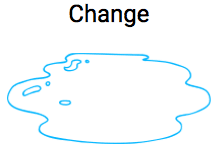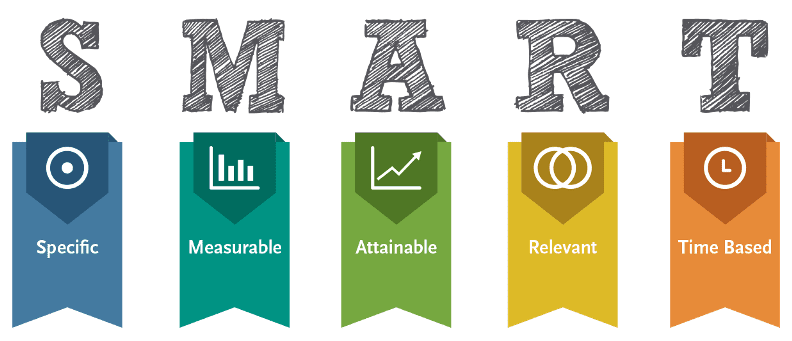
UNFREEZE, CHANGE AND FREEZE
One way to look at the process of setting goals is through the theory of freeze-change-unfreeze. It was the Swedish psychologist Kurt Lewin who invented this model. It is an important model for setting goals. Setting goals is important as all businesses, no matter their field or size, are changing through time. Thus, we must perceive change as a process compounded by different stages. Stages for which we should prepare and develop a plan to be able to cope with the evolution.Setting goals is a task that is time and energy consuming but which can change what you do and how you do it. This is why it is so relevant to think about when to set goals.The theory is commonly compared to an ice cube, which, if left long enough, will melt. And therefore, it will be able to acquire a different shape than the original one. With the three stages model, Kurt Lewin provides us with an understanding of changes inside organizations.
1. Unfreeze
Unfreezing might be helpful to do once in a while. It helps you reconsider if you have actually placed the cups in the best spot in the kitchen. Unfreezing one thing will make more things unfreeze. If you move over your coffee cup next to the coffee machine, you might have to move the tea bags that were there before. This will then be taking the place of the sugar cubes and so on. It is the same when re-thinking your organizations’ goals. When rethinking branding, for instance, you cannot do it without also rethinking human resources, production, and so on.
Unfreezing is a demanding task that will take a lot of psychological energy. Yet, you will benefit in the long run. This means that you should do it regularly, but not too often. Before starting the unfreezing stage, you first need to make everyone aware that change is necessary. The reason why the system should change needs to be visible. The gap between the current situation and the ideal situation should be highlighted. This way, everyone will be aware of why the current process cannot continue. They will understand why change needs to happen.To not waste energy and time, you need to respect the fact that when you set a goal, it is engraved in stone. This way, you can focus on something else and be confident when making decisions. Only then, you might set a date for when you need to reflect on the goal, but you can not do it constantly.
2. Change
After unfreezing, people need to start looking for a new way of doing things. This happens during the change stage. Going back to the cups, tea bags and the coffee machine, you now need to reconsider what places might be best for them. Try out different locations until you find the best one. This will make the morning process of using the kitchen a lot easier. Applying this to a company, you need to make sure that your employees understand how this change will benefit them. You also need to make sure that you give them enough time to adapt to the change. By doing that, you also assure that they contribute to the change in a positive way. For change to happen successfully, you need to focus on communication and give it time to be grounded. Click To Tweet
3. Freeze
Only when the introduced changes to the company have been totally adopted, will change be completely effective. When applying this to your morning coffee, you will realize that you don’t think about where you have placed the mugs, coffee or tea bags.
The SMART model
As an addition to the Unfreeze-Change-Freeze model, you have the SMART model. The SMART model is one of the most suitable models to follow when setting a goal for your organization. SMART stands for Specific, Measurable, Attainable, Relevant and Time Based. It is a well-established tool. You can use it to plan and achieve your goals. This model is attributed to Peter Drucker’s Management by Objectives concept. Below you will find an explanation of each of the letters in SMART.

S for Smart
Your goals should be clear and specific. Otherwise, your employees won’t be able to focus on them. Nor will they feel truly motivated to achieve them. Also, you won’t be able to measure them with key performance indicators (KPIs). It is important that the goals are clear for the employees who have to deal with them. It also has to be clear exactly what the KPIs measure. The employees must know what happens in their everyday work. Thus, the strategic goals will be built on a common understanding between employees. When using KPIs, it is often useful to find out what you want to know and then look at data to find the answers. The KPIs will not matter if they were not measured on something specific and useful. It will also make it easier for you and for your employees to identify a clear plan to achieve the goals.
M for Measurable
It is important to have measurable goals so that you can track your progress and stay motivated. Keeping updated with the progress helps the employees to stay focused. It also helps them to meet deadlines and to feel excited about being closer to achieving your common goals. One way to make sure everyone is always updated is to use a schedule or calendar. This will make it easy to share the progress of the company to each person in real-time.
A for Attainable
Your goals also need to be realistic and attainable. It is important that the strategic goals are achievable, but not too easy to achieve. On one hand, If the goals are too easy to achieve, they will not motivate the employees. But, we find that If the goals are not achievable, the motivation to work towards them disappears. When the task is too difficult to achieve, the employees usually give up or get stressed and under-perform. The goals must also be realistic so that the company is able to achieve them with the available resources. Nothing is more discouraging than striving for a goal that you will never obtain.
R for Relevant
To succeed with a goal, it is important to ensure that your goal matters to everyone involved. It should also align with the company goals. The competences of the employees and their education need to be taken into consideration when delegating tasks. That’s how you make sure everyone is capable of completing the tasks they have received. To set relevant goals, start by asking yourself about the importance of these goals for your company. What benefits would it bring to your company if these goals get achieved? Would these goals still have the same importance in a month’s time or if it is just a temporary issue?



